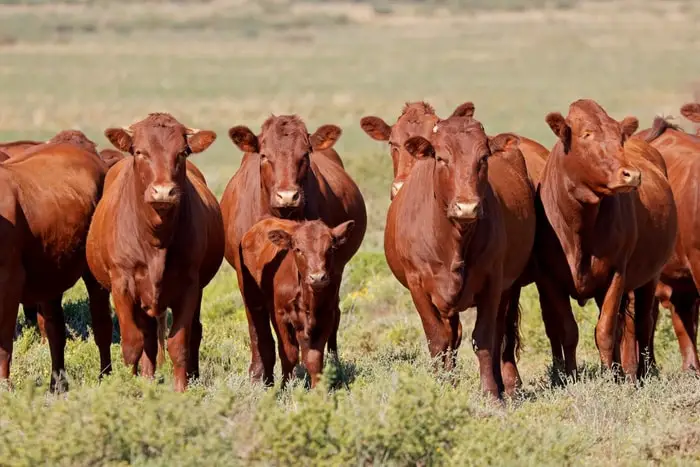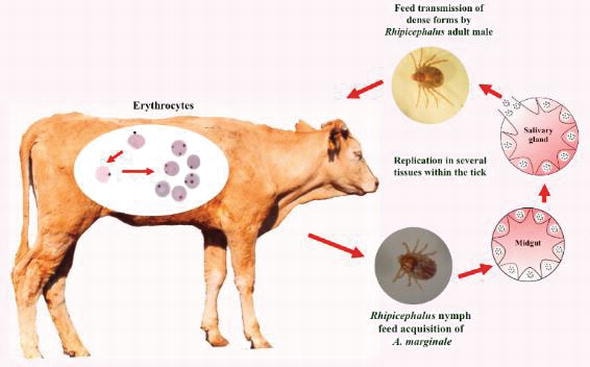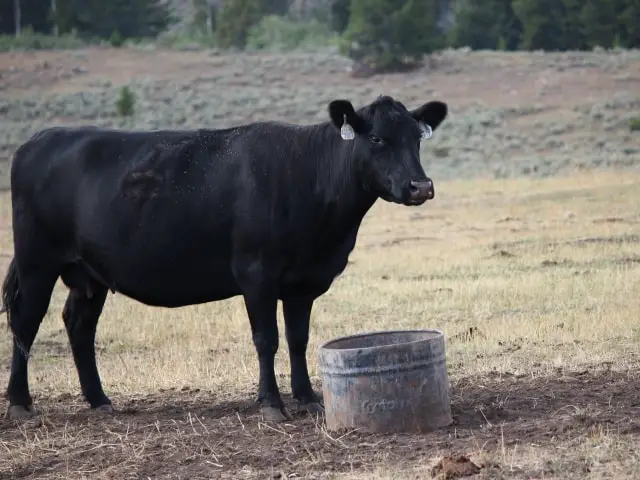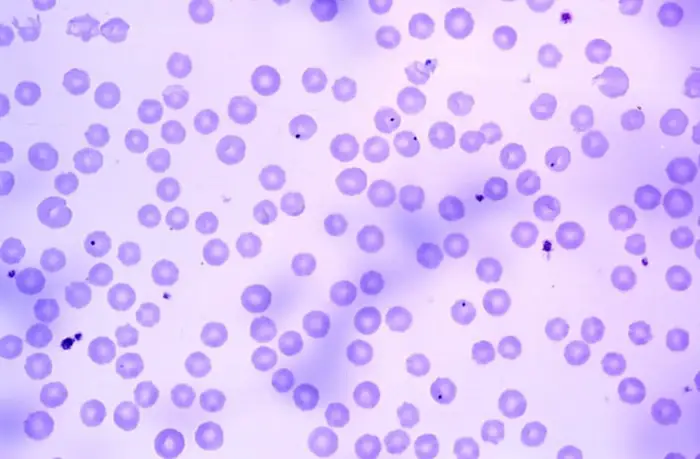Anaplasmosis in cattle or gall sickness is an infectious vector-borne disease caused by obligate intraerythrocytic rickettsia organisms of the genus Anaplasma and characterized by fever, inappetence, decrease milk yield, progressive anemia. Icterus and constipation. The disease is common worldwide and sporadic in the temperate region. It is essentially a disease of cattle and potentially affecting animals of any breed and gender.
Anaplasmosis in cattle is of economic significance. Seropositivity rates in endemic areas varied from 60 to 90%. All cattle are susceptible to infection, but the disease’s age is a significant determinant of the disease’s severity. The disease is rare in enzootic areas because the infection pressure is high, and cattle are infected when they are age-resistant to clinical disease.
Important Information on Anaplasmosis in Cattle
Anaplasmosis is one of the most devastating diseases of cattle in tropical regions of the world. The affected cattle may die suddenly without showing any clinical signs, and others may act as carriers. As a farm owner, you should keep a preliminary idea about the disease. I shall give you a basic idea and features of the disease to understand my article.

Causes of Anaplasmosis in Cattle
Anaplasmosis in ruminants is caused by Anaplasma spp, which are obligate intra-erythrocytic parasites. Anaplasma marginale is the causative agent in cattle and wild ruminants. Anaplasma centrale is closely related to Anaplasma marginale and causes mild anaplasmosis in cattle.
Epidemiology of Gall Sickness in Cattle
Anaplasmosis is widespread in temperate, tropical, and subtropical regions and sporadic in temperate regions. Up to 20 tick species, including the one-host Boophilus, have been shown to transmit infection. Since the transovarial infection occurs in most of these species, they may be considered the intermediate hosts. A variety of species of wild ruminants can be infected and may have significant reservoirs. The infection source is always the blood of an infected animal, and recovered carrier animals.

Transmission of Anaplasmosis in Cattle
All cattle are susceptible to infection, but the disease’s age is a significant determinant of the disease’s severity. Young calves up to the age of 6 months are usually susceptible to infection, and calves aged between 9months to 1 year, usually shows no signs or develop only a mild form of the disease. The animals’ age ranges from 2to 3 years may not be developed the acute or fatal disease. Very often, fatal infections occur in cattle more than three years of age.
The disease is transmitted by blood-sucking insect transmission, iatrogenic transmission, and transplacental transmission. Intra-uterine infection may lead to fetal death and abortion. Iatrogenic transmission occurs by the use of instruments employed for the vaccination, dehorning, castration, and tattooing. That becomes contaminated with fresh infected blood.

What are the symptoms of Bovine Anaplasmosis?
The clinical manifestation of the disease begins within 1-2 weeks after the bite of an infected tick includes:
- Fever.
- Anemia.
- Severe headache.
- Increased heart and respiratory rate.
- Inappetence, muscle weakness.
- Depression.
- Icterus.
- Decreased milk yield.
- Muscle tremors.
- Gastro-intestinal atony.
- Constipation.
- Dehydration.
- Restlessness and aggressiveness and are probably due to cerebral hypoxia.
- Emaciation.
- Pregnant animals may abort.
- Uncoordinated movements.
- Death.
Diagnosis of Anaplasmosis
The diagnosis of anaplasmosis can usually be made based on the disease’s geographic region, history, and symptoms. The definitive diagnosis of anaplasmosis depends on the demonstration of Anaplasma bodies in erythrocytes of affected animals. Serologic methods are mainly required to detect carrier and latent infection. The direct and indirect fluorescent antibody test ( FAT and IFAT ), Complement Fixation Test (CFT), capillary tube agglutination test, enzyme-linked immunosorbent assay (ELISA), simple latex agglutination test, radio-immunoassay, and rapid applied successfully to the detection of the forms of anaplasmosis.

What is the Treatment for Anaplasmosis in Cattle?
Specific chemotherapy and supportive therapy are required for the treatment of anaplasmosis. The tetracycline drugs ( tetracycline hydrochloride, chlortetracycline, oxytetracycline, and doxycycline) and imidocarb are the most widely used chemotherapeutic drugs for the treatment of your anaplasmosis in cattle. Blood transfusion is very useful for the disease, and transfusions should be repeated.
How Do You Control Anaplasmosis in Cattle?
You must be eliminating the source of infection by chemotherapy of carrier cattle. Identification of carrier animals by serologic tests, and removing them by slaughter, segregation, and isolation from the rest of the herd or sterilizing the infection by chemotherapy. Intensive vector control reduces the dissemination of anaplasmosis in a susceptible herd and can substantially reduce the number of clinical cases occurring during an outbreak.
A vaccination program is usually recommended to ensure widespread immunity in the cattle population. Most control programs in enzootic areas are based on increasing the resistance of the population by immunization. The vaccine does not prevent disease but reduces the severity of the disease.
Concluding Remarks on Bovine Anaplasmosis
Anaplasmosis is a tick-borne intracellular, infectious disease of cattle and other animals. The disease is widespread throughout temperate and tropical countries. The disease is easily controlled by reducing the tick population on your farm. You must identify the disease in carrier animals by serology and blood screening. Proper and timely treatment can save the life of cattle and reduce the loss of your farm. If you are benefitted from the above information, please share it with your friends via social media.